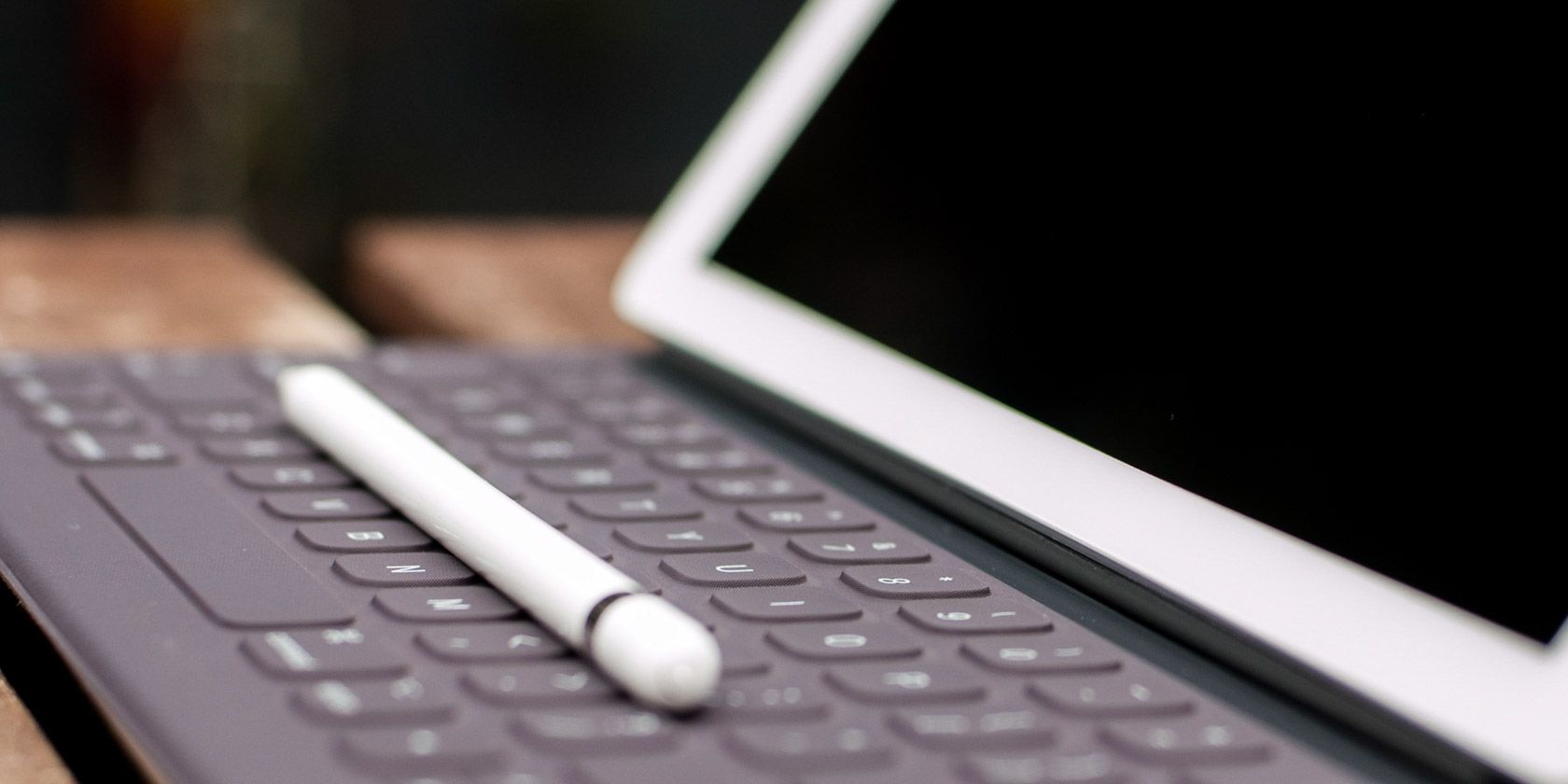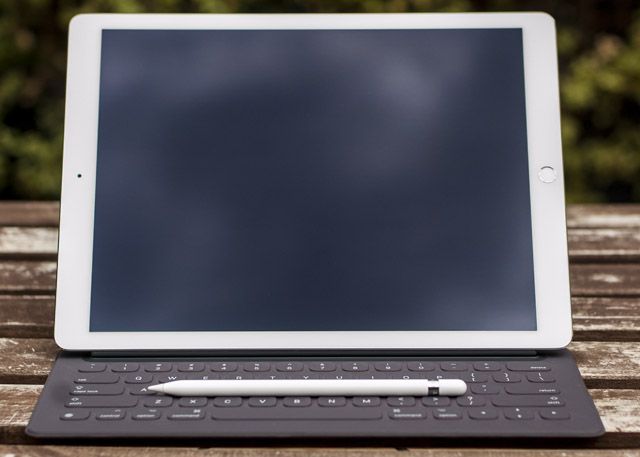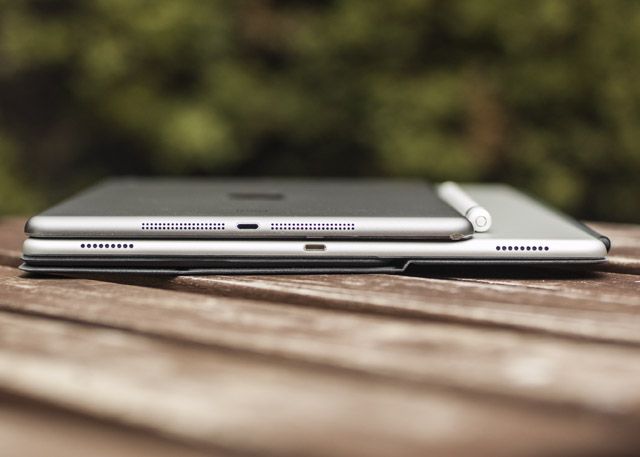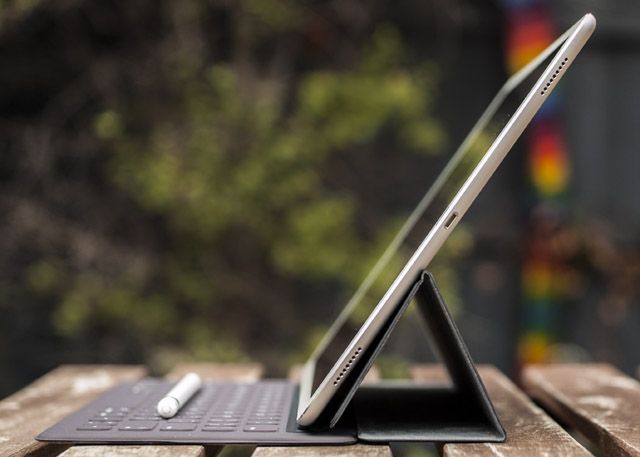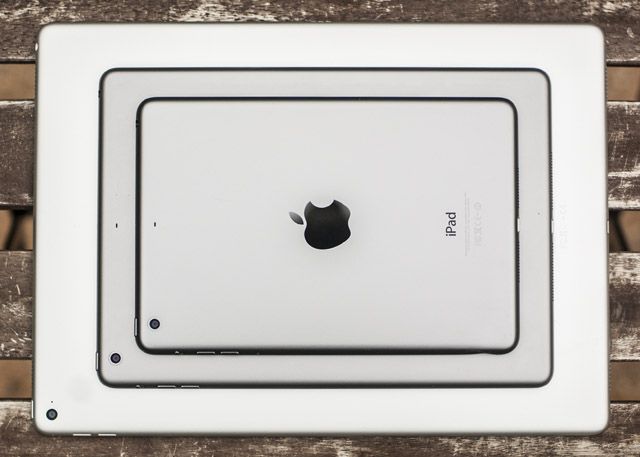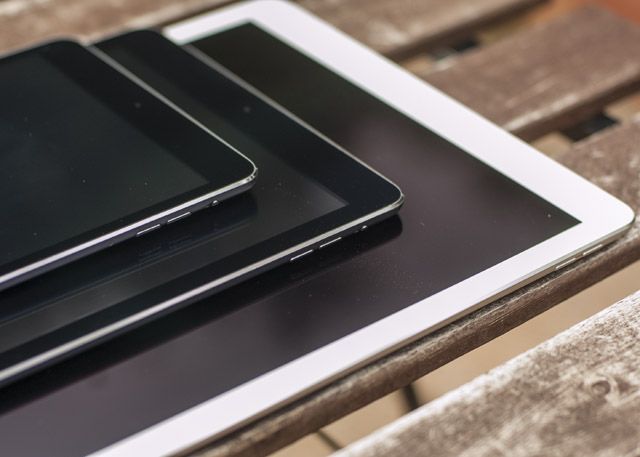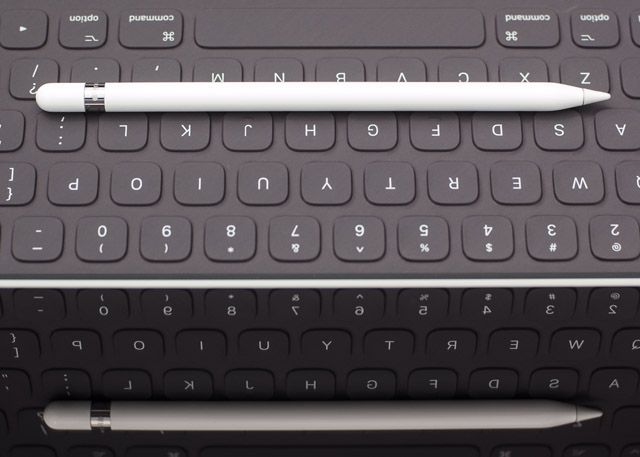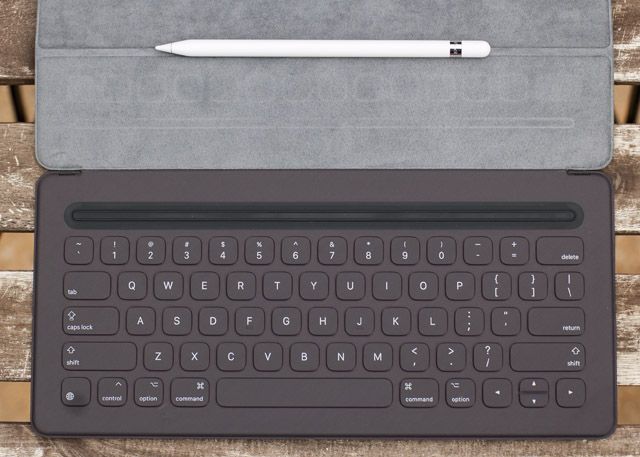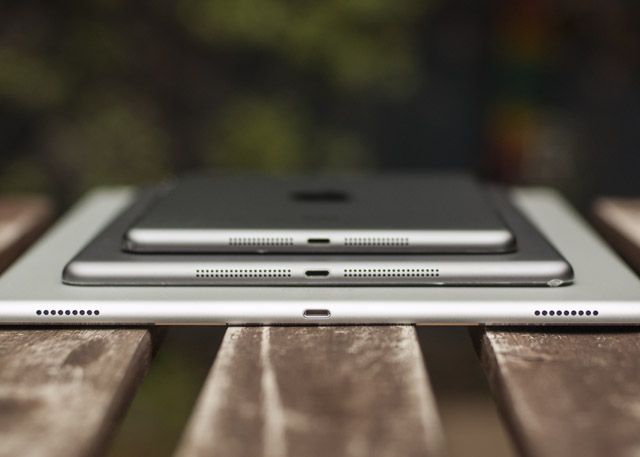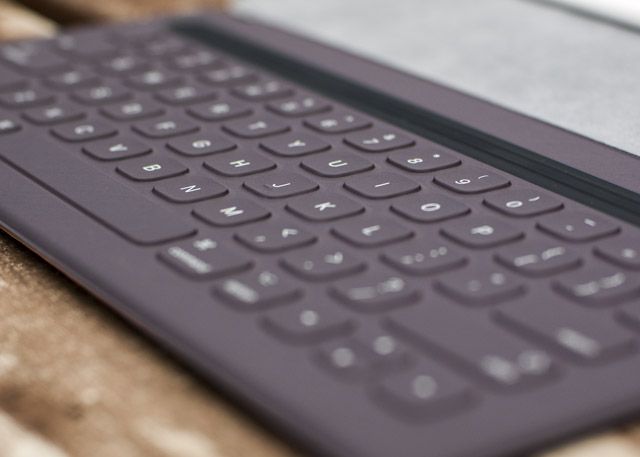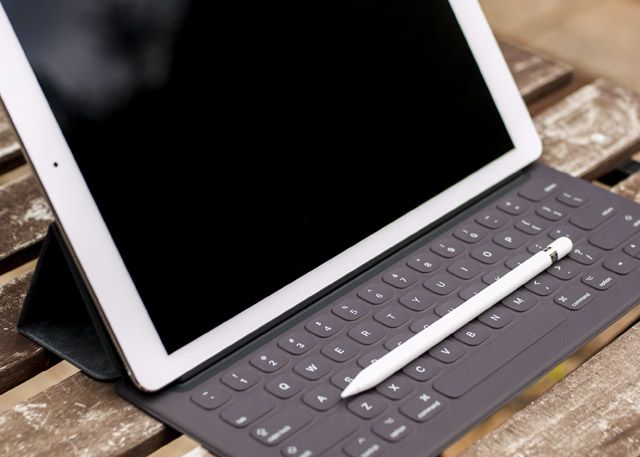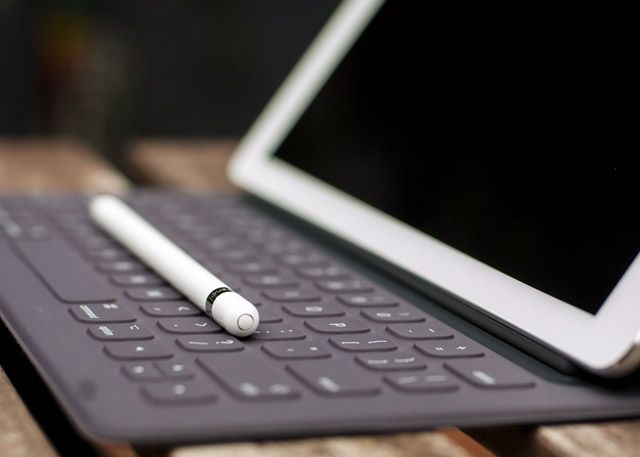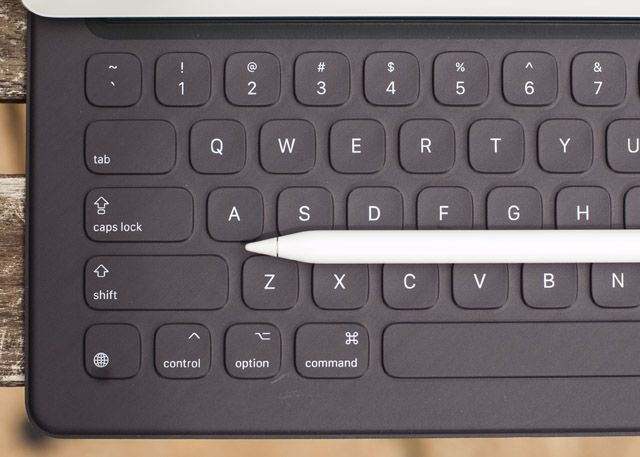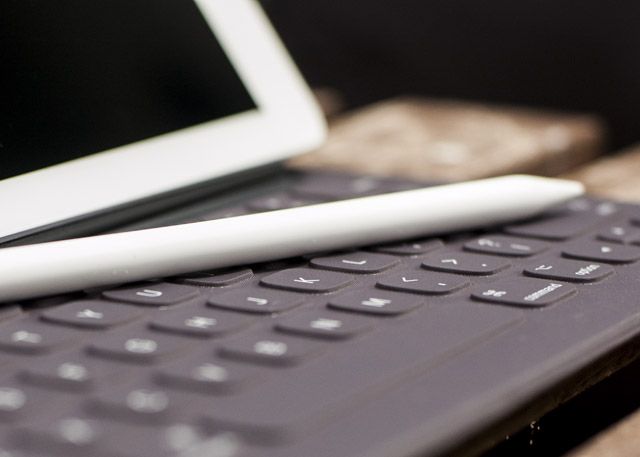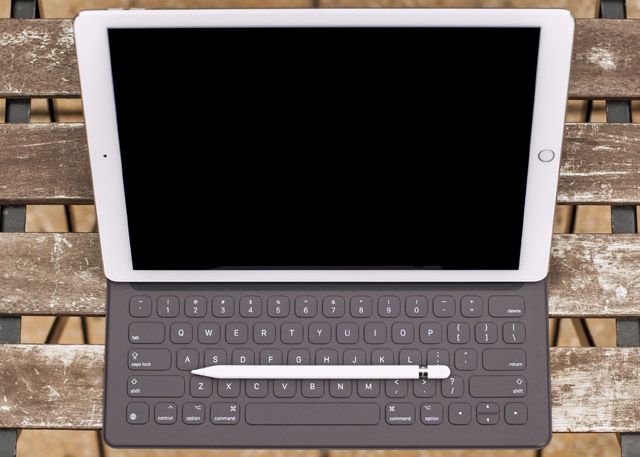iPad Pro
If there's one thing you should have learned about Apple by now, it's to never take their absolute statements seriously. Not long after Jobs' handed over control to Tim Cook, the iPad shrunk, the iPhone grew and now we've seen one of Apple's boldest statements disappear into the ether with the arrival of an Apple-branded stylus.
Even a slightly larger iPad was unthinkable a few years ago — but now it's here, and it's big. The iPad Pro is a device that's takes itself very seriously, with a steep price tag, commanding size and a set of pricey accessories designed to help you accomplish more with iOS.
The iPad Pro isn't just a larger and faster tablet — it represents an entirely new way of using iOS. The real question is: does it work, and more importantly — do you really need one?
A Big Slab of Tablet
The first thing that hits you about the iPad Pro is its size. At first it seems massive, especially when compared to the standard 9.7" iPad, dwarfing the iPad mini entirely with its 12.9" display. Despite the astounding size, the iPad Pro didn't feel as heavy as it looked when I first picked it up, though it is considerably heavier than Apple's standard model, at 713g (compared to the iPad at 437g).
The added weight still compares favourably to the smallest 11" MacBook Air, which weighs in at 1,008g – so it's essentially Apple's lightest and thinnest workhorse, if you want to call it that. With a starting price of $799 for the 32GB model, I suspect Apple would rather you did.
There are very few other changes to the construction of the iPad Pro compared with the rest of the line-up, save for an extra set of speakers at the top of the unit — finally providing some semblance of stereo sound. Yes, they still point outwards rather than directly at you, but things are considerably louder this time round, and Apple even managed to work in a modicum of bass response too.
The unit is marginally (0.8mm) thicker than an iPad Air 2 (the original iPad Air is pictured below), at 6.9mm — and it is noticeable, but not enough to really matter. Everything else is the same size as a regular iPad or iPhone — the volume rockers, home button, front and rear facing cameras (8 and 1.2 megapixels, respectively), and even the size of the screen bezel.
Such design considerations stop the iPad Pro looking comically big, and at a screen resolution of 2732 x 2048 packs in 264 pixels-per-inch (ppi) — it maintains pixel density parity with the iPad Air 2. If you love the iPad but have been dreaming of a larger screen that can help you get more done, it's hard to see how you'd be disappointed with the form factor on offer here. Furthermore, it's not necessarily just about screen size and additional real-estate — it's all about how that extra room is utilised in the familiar iOS environment.
A New Way to iPad
The iPad Pro isn't just a new tablet, it's a combination of tablet and accessories that are dependent on some adjustments to the way iOS works. The biggest change is the ability to use multiple apps at once, in a side-by-side view. Regular iPad users can do this too by upgrading to iOS 9, but for proper split-screen support (where two apps occupy half of the screen each) you'll need an iPad Pro.
The reason the iPad Pro can do this so well is down to the raw grunt that Apple has provided under the hood. This takes the form of a brand new A9X chip, which according to Apple has 1.8 times the raw processing performance and twice the graphical processing performance of the A8X found in the iPhone 6s and iPad Air 2. The brain of the operation also comes with 4GB of RAM, double that of the iPhone 6s and iPad Air 2; and benchmarks have put overall A9X performance on-par with Intel's 2013 Core i5 processors — essentially a MacBook Air that's a few years old.
For a tablet that's 6.9mm thick with a battery life of 10 hours, that's nothing short of incredible. As a result, the iPad Pro didn't hiccup once in the whole time I was testing it. 4GB of RAM felt like a dream compared to the woeful 1GB I'm used to from my original iPad Air — allowing me to switch back and forth between four or five Safari tabs, while checking Slack conversations in a pinned window, sending texts using Messages, and making notes in Evernote without anything falling out of memory.
Hardware considerations aside, the iPad Pro's position as a tablet for getting things done is where the changes are most noticeable. Side-by-side windows, coupled with a proper hardware keyboard mean it's possible to work on one thing without getting completely distracted by another. I actually felt like the restrictive nature of iOS, particularly compared with OS X, makes for a less distracting work environment — and that it might actually be possible to get more done with the iPad Pro, than on a better specced, more capable MacBook Pro.
Now that may say more about my OS X desktop than anything else, but forcing an app-based approach — in an ecosystem that already has plenty of dedicated apps for things you'd ordinarily use the web for on a Windows or OS X machine — feels like a more focused way of working. I've even found certain web apps (like WordPress, which I'm typing this review into using the Smart Keyboard, alongside a pinned Evernote window) are no longer tedious to use on an iPad.
Unfortunately, the split view isn't all plain sailing. Apps will need to be updated to support the feature, even using the smaller split view. That means older apps, some of which are perfectly suited to being used alongside a Safari window (like password manager MiniKeepass) can't make use of the new feature. Apple has also not yet (as of iOS 9.2) provided split view support for its Music app, so you can't browse Apple Music while working. I can only assume support for Music is coming at some point, because leaving it out makes absolutely no sense.
A MacBook Replacement?
To answer the question of whether the iPad Pro can replace your laptop, you're going to need to take a look at how you use your MacBook presently. As a MacBook Pro owner, I was skeptical — and truth be told I still am. I've used the iPad Pro for a full week in place of my MacBook, and though I've been pleasantly surprised with how capable the tablet is, it's still nowhere near as capable as a powerful machine with a "proper OS".
I didn't think I'd be able to edit RAW photos on the iPad, but using my trusty camera connection kit and ageing Nikon D50 digital SLR, I was able to import photos, edit them in LightRoom (for free, using a near-similar set of editing tools that I'm used to from Adobe Camera RAW on my MacBook) and export back to my Camera Roll. Of course, this takes a lot longer on the iPad Pro as it does in Photoshop. I couldn't create presets and apply them en-masse to a set of photos, nor could I run Adobe's Image Processor to generate two sets of images — one 640 px wide set for use on the web, and the other larger full-resolution set that my editor always requests.
It's also possible to edit video on the iPad Pro, but my preferred choice of video editor (Adobe Premier) isn't available (yet), which means I'm stuck with Apple's iMovie. Our video reviews are hardly complex productions, but I still feel like iMovie is a prosumer solution at best. Though it utilises Smart Keyboard shortcuts and supports 4K video in the latest update, it still feels lacking when it comes to getting serious work done. That said, turning in a finished production via BitTorrent Sync and recording a voiceover using the camera connection kit and a Samson USB microphone posed no issues for the iPad Pro.
And then there's all those other things you generally need a "proper OS" for — formatting USB drives, recovering data from corrupt memory cards, downloading things using BitTorrent, managing a media collection that doesn't depend on iTunes or Photos, running old software and games, and pretty much anything for which no dedicated iOS app exists. If you're dependent on some bespoke software, or are unwilling to adapt the way you work then you won't find the iPad Pro to be a compelling laptop replacement.
But I'm not sure the examples I've cited here are necessarily applicable to the vast majority of people. Regular users who don't depend on hefty video editors or Adobe's Image Processor won't encounter the same resistance I did. Adding a full-sized keyboard to the iPad and letting you run multiple apps at once does wonders for your productivity, and if you mostly use your laptop for email, managing a schedule, liasing with clients, keeping in touch with your boss, and maybe some word processing or number crunching in a spreadsheet app; you'll probably love the iPad Pro, its marvellous battery life, slim form factor and the way iOS encourages you to get more done.
A Very Smart Keyboard
There's another upshot to the iPad Pro's large 12.9" screen — the fact that you can fit a comfortably-sized keyboard into the cover. If you've had the misfortune of using a regular iPad keyboard case, you'll probably have a hard time forgetting the cramped keyboard and generally narrow workspace in front of you. The fact that most of those keyboards add serious weight and unwanted thickness to your otherwise svelte tablet, often means better off bringing your MacBook with you instead.
Not so with the iPad Pro and Apple's incredibly thin and light Smart Keyboard. The accessory connects via a small, flat three-pin port that automatically clips into place like a regular Smart Cover. That means there's no Bluetooth to worry about, no pairing codes, and no battery to charge.
The keyboard is virtually identical to a regular MacBook keyboard, so if you're used to typing on a Mac then the adjustment period is virtually non-existent. The main difference is the lack of "Esc" and "fn" — and the addition of a globe icon in the bottom left corner, for accessing emoji and other languages. You even get the typically compact set of arrow keys we're used to from Apple input devices, though the row of function keys used to control things like volume and brightness on a Mac have been left out.
It's possible to build up some serious typing speed using the Smart Keyboard. The keys are noticeably flat, but also satisfyingly clicky. First-gen Surface touch keyboard this is not, with just enough key feedback (and a satisfying pop) to make prolonged typing sessions a pleasant experience. You can even use all the usual OS X keyboard shortcuts you're used to, including cmd+tab for switching between apps, cmd+c and v for copy and paste, and cmd+r for refreshing a tab in Safari.
The lack of touchpad isn't a problem either, as the keyboard is shallow enough that moving between screen and keyboard is not a jarring experience. The recently-introduced iOS 9 two-finger gesture for manipulating the on-screen cursor works well most of the time, though I did occasionally have trouble using this feature in certain web apps (notably WordPress).
I didn't find typing on the iPad any less comfortable than typing on a MacBook Air, either on a flat surface like a desk or on my lap. I was especially concerned about the latter, particularly after Microsoft's early Surface mistakes, but the folded Smart Cover construction is pretty rigid and overbalancing (so that the tablet falls backwards) didn't seem like the issue I thought it might be.
Of course, bulding a keyboard into a Smart Cover also comes with its drawbacks. The cover no longer sits completely flat, but that's a relatively minor point. Of much greater concern is the fact that the underside (which sits against the iPad Pro's screen when folded up) is made of the same soft, faux-suede stuff you find on a regular Smart Cover. Experience has taught me that this stuff attracts dirt and grime like a magnet, and it's also impossible to clean completely.
This isn't such a concern when you can replace a Smart Cover on a regular iPad for around $40 (or $59 for the iPad Pro equivalent), but the Smart Keyboard costs $169. My regular iPad Smart Cover was covered in crap within a year of me owning it. Considering the iPad Pro uses this soft suede as the main point of contact with surfaces, a rubberised underside might have been a better choice.
"If You See A Stylus, They Blew It"
I'm no artist, but I've used a few stylii in my time. Since getting my iPad I've had the displeasure of using everything from those free pen-stylus combinations you get given at trade shows, to the $99 Adonit Jot Touch I reviewed last year. I can't say I've ever been massively keen on any of them, but I don't deny that for a degree of exactitude when it comes to manipulating a digital canvas, they're a necessary evil.
Apple's Pencil is hands-down the best stylus I've ever used, and though I'd get little use out of one if I were to purchased my own iPad Pro, I'd heartily recommend it to any budding digital artist looking to turn the iPad Pro into a portable canvas.
The pen itself uses two sensors in order to detect pressure sensitivity, without employing Apple's recently-introduced Force Touch technology you'll find in use on the iPhone 6s. On-board sensors help detect the angle at which you're holding the pen, which enables you to shade and pull off impressive examples of calligraphy in supported apps. Fortunately the list of apps that support the new Pencil is strong from the get-go, including iOS heavyweight Procreate, sketchpad and brainstorming app Paper, and note-taking standard Evernote.
The Pencil isn't a capacitive stylus that mimics the touch of your finger. It's a Bluetooth accessory that needs to be paired (by plugging it in using the attached lightning connector) before use. Apple claims that the iPad Pro scans the Pencil input at "240 times per second" — collecting twice the number of data points than simply using the tablet with your finger. Such a level of accuracy is used to recreate your input on a millimetre perfect scale, and you'll be hard-pressed to notice any input lag either.
As a result the Pencil provides a stylus experience you simply won't get elsewhere. Apple is able to marry accessory and hardware by virtue of the fact that they control the entire ecosystem, and the result puts similar competing accessories to shame. In my aforementioned review I noted how the Adonit Jot Touch sometimes didn't adhere to the exact point of contact, despite its fine tip and steep price tag, but for the same price Apple's Pencil does.
The tablet ignores multi-touch input from your digits when the stylus is close enough which means you can lean on the screen while drawing without creating a big mess. Battery life is impressive — I charged the accessory once, and even short 10 minute bursts provide you with a decent amount of playtime to get things done.
And Then There's The Price
The iPad Pro starts at $799 for the 32GB model, but quite frankly the 32GB model is a waste of your time. This is a serious tablet for getting serious work done, and the last thing you want to be doing is juggling space and apps. That means you should approach the iPad Pro as a $949 tablet for the 128GB version (or a $1,079 tablet if you want the cellular version). I'm surprised a 256GB (or even 512GB) variant doesn't yet exist, but it's probably only a matter of time.
The Smart Keyboard will set you back $169, and the Pencil will run you $99. As the iPad Pro works best with the Smart Keyboard (I don't really see the point in buying one if you're not going to be using a keyboard with it), the very least you'll probably be spending is $1,118 — or $1,217 if you want a stylus as well.
For that money you could buy a more capable 13" MacBook Air (from $999), or you could spend a little more and pick up a much more capable 13" MacBook Pro (from $1,299). This is an eye-watering realisation for anyone who feels taken by the iPad Pro, because you're essentially paying top dollar for a "big screen" iOS experience, portability and an ultimately less capable device than many similarly-priced laptops. But honestly, what did you expect from Apple?
A Surface Pro 4 with a Core i5 ($999) will cost you slightly more when you factor in the cost of a Type Cover (a total expenditure of $1,229 on Amazon), but it comes with a "proper" desktop OS in the form of Windows 10. Whichever way you look at it, Apple is charging a premium — but at least the overall experience delivered when you factor in the accessories and surprisingly productive software environment reflects that of an equally premium product.
It's hard not to recommend the iPad Pro to anyone who feels at home using iOS and wants a slightly larger tablet which can still fulfill the "Netflix and chill" iPad experience in the evening, while providing a highly usable portable workspace in the day. The real question is whether you want to spend that much on a big iPad — and that will ultimately come down to personal preference.
[recommend]Buy it if you want a productive iPad and can stomach the cost, otherwise a MacBook Air will cost you less and provide a more capable OS at the expense of size and the iOS ecosystem.[/recommend]
Send your products to be reviewed. Contact James Bruce for further details.

